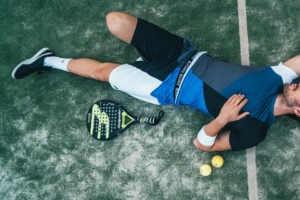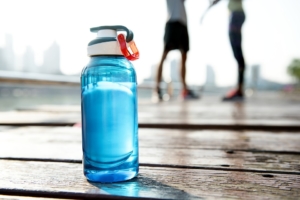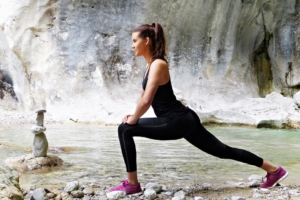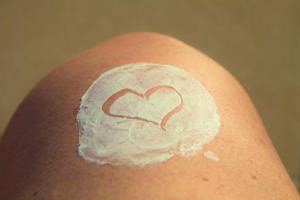Exercising in the Heat
Top tips for safely exercising in the sunshine.
The summer months provide many opportunities for working on your fitness goals in the great outdoors, but you should use caution when exercising in the heat. Read these tips for looking after yourself whilst exercising in the heat to make sure you can make the most of your time outside.
1. Exercising in the Heat: The Dangers
It may sound overly dramatic, but there are some dangers associated with exercising in the heat. Before you leave home and plug into your summer anthems playlist, it’s worth making sure you understand the dangers and how to mitigate them. Although it may be a lot more enjoyable to exercise whilst the sun is shining, the experience actually puts extra strain on your body.
Whilst you’re exercising in the heat your core body temperature increases due to both the exercise you’re undertaking and the warm weather. This sets off a chain reaction in your body: as a means of cooling itself, your body sends extra blood to circulate through your skin leaving less blood for your muscles. To compensate for the lack of blood being sent to your muscles, your heart rate increases. If the weather is humid the evaporation of your sweat is stalled pushing your body temperature higher.
Your body has its own in-built cooling system which adjusts your perspiration levels, skin and blood vessels according to the outside temperature. Exercising in the heat can cause this system to faulter as you sweat heavily and fail to replenish the lost fluid through good hydration. This can ultimately result in a heat-related illness, examples of which include:
- Headaches are common in the heat. As Healthline reports, they are often caused by dehydration and the brightness of the sun when exercising in the heat
- Fatigue is another symptom of dehydration. It can also be caused purely by the extra energy your body is expending attempting to keep itself cool, as mentioned by Live Science
- Heat Exhaustion occurs when your body temperature exceeds 40c. Symptoms include nausea, weakness, vomiting, headaches, sweating, fainting and cold, clammy skin. If left untreated, it can lead to heatstroke
- Heatstroke is an emergency condition instigated by your body temperature increasing beyond 40 C. Sufferers will feel disorientated, experience dizziness, nausea, vomitting or fainting. Urgent medical attention is required to avoid organ failure
- Heat Cramps or ‘exercise-associated muscle cramps’ are painful contractions of the muscle that can happen when exercising in the heat
- Heat Syncope is characterised by fainting or a feeling of lightheadedness caused by high temperatures and particularly associated with suddenly standing up or sitting down
- Exercise-Associated Collapse occurs when you stop abruptly after a period of vigurous exercise and presents as fainting or a sensation of lightheadeadness
2. Keep Hydrated
As mentioned in our Simple tips to stay looking hot this summer article, there is an extensive NHS guide to hydration, which details the signs of dehydration. Drinking water throughout the day will keep you hydrated for a greater length of time. Hydration is important regardless of the weather, but especially so when you’re exercising in the heat.
3. Know Your Fitness Level
When exercising in the heat it’s important to be honest with yourself about your fitness level. There is no shame in needing to pace yourself, starting out small with your fitness regime. Take frequent breaks whilst you exercise and reduce the intensity of your workout if you need to.
4. Wear Appropriate Clothing
It may not be boiling hot when you leave your home, but if it’s a warm day it can’t hurt to layer up so that you’re ready to strip down should the need arise. Sweat evaporates easier if you’re wearing loosefitting and lightweight clothing. Dark colours absorb heat, so it’s a good idea to wear light coloured garments if possible.
5. Get Acclimatised
Exercising in the heat on the spur of the moment without forward planning is unlikely to give you the best results. It’s far better to gradually acclimatise yourself to exercising in the heat by keeping fit outdoors a little at a time. It can be easy to forget that when you exercise in a gym you’re in an air conditioned environment.
6. Wear Sunscreen
Having sunburn significantly reduces your body’s ability to cool itself. This article goes into great depth about the importance of suncream. There is a common misconception that it is only necessary for people with lighter skin tones to wear sunscreen, but this is not the case. Suncream helps protect your skin from harmful UV rays decreasing your risk of skin cancer.
7. Stay in the Shade
The NHS recommends avoiding direct sunlight exposure between 11am and 3pm. When sourcing locations for exercising in the heat, make sure there are plenty of shaded areas. Parks often tend to be ideal locations as they have plenty of trees.
8. Pack an Electric Fan
A battery powered fan will provide a quick and easy means of cooling yourself down during breaks from exercise and when you’ve finished your session.
9. Keep your Head Cool
A hot head can quickly lead to fatigue. Keep your head cool throughout your time exercising in the heat by wearing a cap. As Red Bull recommends, you could even dip the hat in cold water.
By
Sean Burgess
(MSc, BSc (Hons), ASCC, MGBT)
SB Fitness Founder
Email: info@seanburgessfitness.com
Phone: 01202 282726








